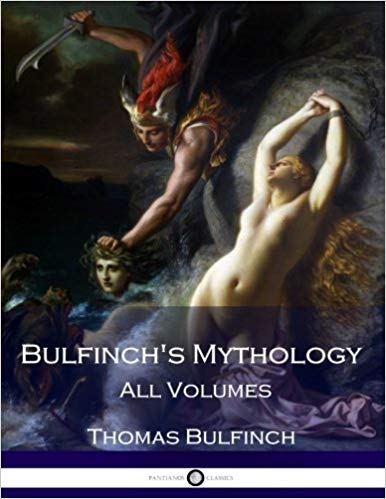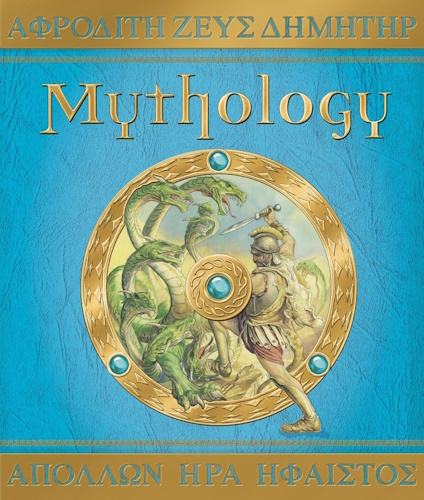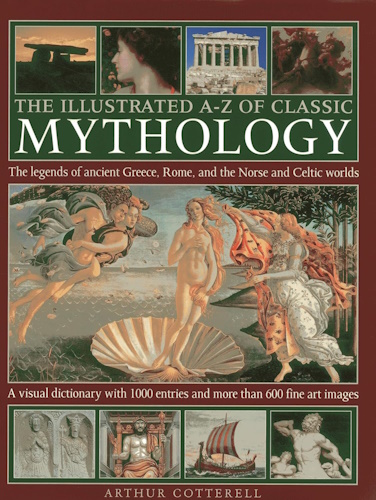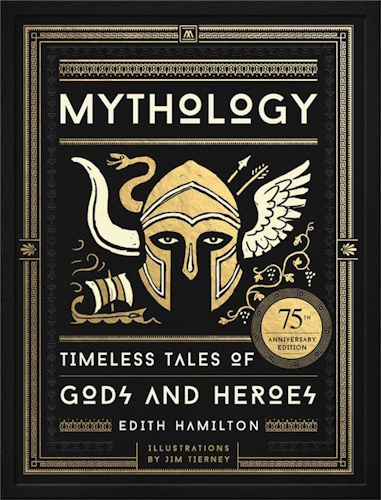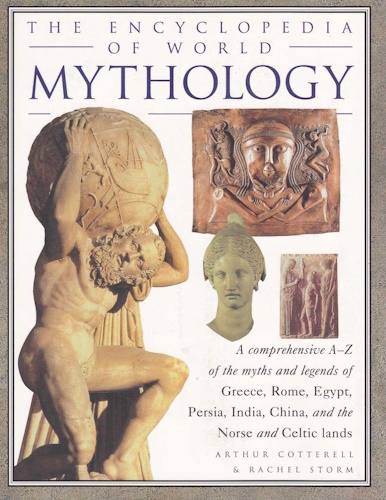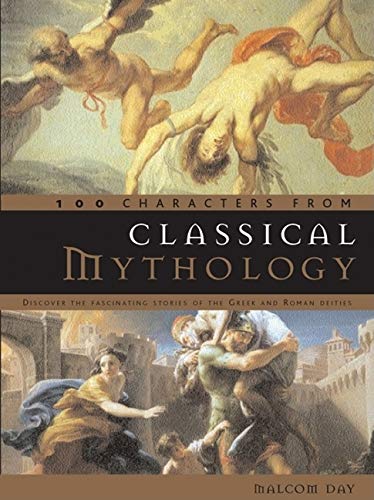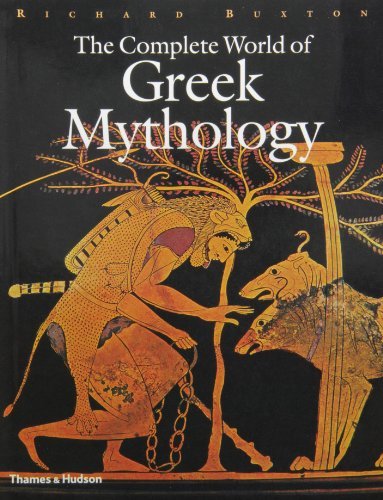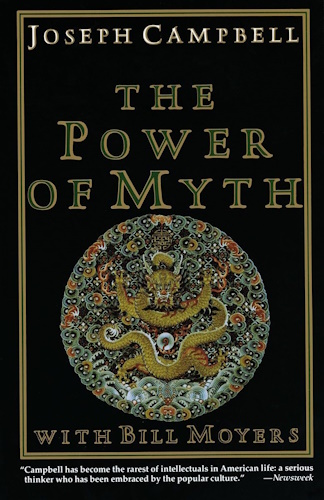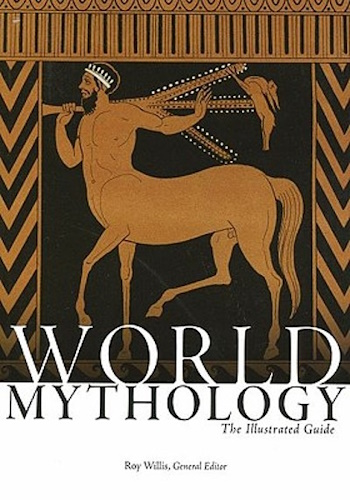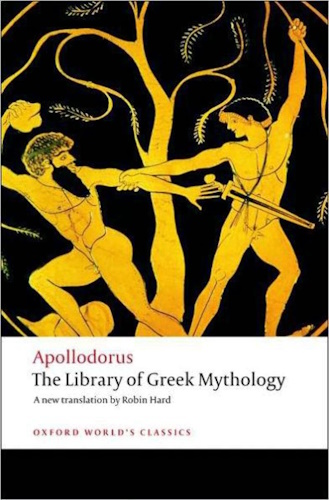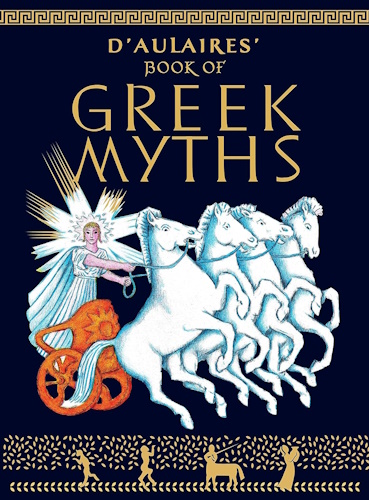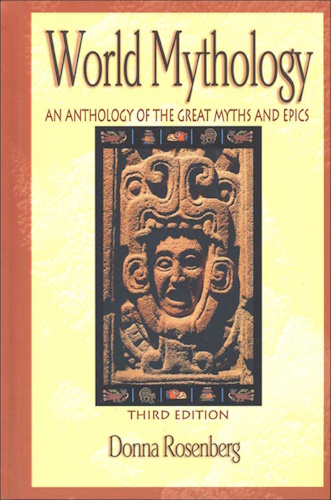
![]()
![]()
Part I.
King Arthur and His Knights.
Chapter XIII.
End of the Story of Sir Tristram of Lyonesse.
WHILE Sir Tristram and the fair Isoude abode yet at La Joyeuse Garde, Sir Tristram rode forth one day, without armor, having no weapon but his spear and his sword. And as he rode he came to a place where he saw two knights in battle, and one of them had gotten the better, and the other lay overthrown. The knight who had the better was Sir Palamedes. When Sir Palamedes knew Sir Tristram, he cried out, "Sir Tristram, now we be met, and ere we depart we will redress our old wrongs." "As for that," said Sir Tristram, "there never yet was Christian man that might make his boast that I ever fled from him, and thou that art a Saracen shalt never say that of me." And therewith Sir Tristram made his horse to run, and with all his might came straight upon Sir Palamedes, and broke his spear upon him. Then he drew his sword and struck at Sir Palamedes six great strokes, upon his helm. Sir Palamedes saw that Sir Tristram had not his armor on, and he marvelled at his rashness and his great folly; and said to himself, "If I meet and slay him I am ashamed wheresoever I go." Then Sir Tristram cried out and said, "Thou coward knight, why wilt thou not do battle with me? for have thou no doubt I shall endure all thy malice." "Ah, Sir Tristram!" said Sir Palamedes, "thou knowest I may not fight with thee for shame; for thou art here naked, and I am armed; now I require that thou answer me a question that I shall ask you." "Tell me what it is," said Sir Tristram. "I put the case," said Sir Palamedes, "that you were well armed, and I naked as ye be; what would you do to me now, by your true knighthood?" "Ah!" said Sir Tristram, "now I understand thee well, Sir Palamedes; and, as God me bless, what I shall say shall not be said for fear that I have of thee. But if it were so, thou shouldest depart from me, for I would not have to do with thee." "No more will I with thee," said Sir Palamedes, "and therefore ride forth on thy way." "As for that, I may choose," said Sir Tristram, "either to ride or to abide. But, Sir Palamedes, I marvel at one thing,– that thou art so good a knight, yet that thou wilt not be christened." "As for that," said Sir Palamedes, "I may not yet be christened, for a vow which I made many years ago; yet in my heart I believe in our Saviour and his mild mother Mary; but I have yet one battle to do, and when that is done I will be christened, with a good will." "By my head," said Sir Tristram, "as for that one battle, thou shalt seek it no longer; for yonder is a knight, whom you have smitten down. Now help me to be clothed in his armor, and I will soon fulfil thy vow." "As ye will," said Sir Palamedes, "so shall it be." So they rode both unto that knight that sat on a bank; and Sir Tristram saluted him, and he full weakly saluted him again. "Sir," said Sir Tristram, "I pray you to lend me your whole armor; for I am unarmed, and I must do battle with this knight." "Sir," said the hurt knight, "you shall have it, with a right good will." Then Sir Tristram unarmed Sir Galleron, for that was the name of the hurt knight, and he as well as he could helped to arm Sir Tristram. Then Sir Tristram mounted upon his own horse, and in his hand he took Sir Galleron's spear. Thereupon Sir Palamedes was ready, and so they came hurtling together, and each smote the other in the midst of their shields. Sir Palamedes' spear broke, and Sir Tristram smote down the horse. Then Sir Palamedes leapt from his horse, and drew out his sword. That saw Sir Tristram, and therewith he alighted and tied his horse to a tree. Then they came together as two wild beasts, lashing the one on the other, and so fought more than two hours; and often Sir Tristram smote such strokes at Sir Palamedes that he made him to kneel, and Sir Palamedes broke away Sir Tristram's shield, and wounded him. Then Sir Tristram was wroth out of measure, and he rushed to Sir Palamedes and wounded him passing sore through the shoulder, and by fortune smote Sir Palamedes' sword out of his hand. And if Sir Palamedes had stooped for his sword, Sir Tristram had slain him. Then Sir Palamedes stood and beheld his sword with a full sorrowful heart. "Now," said Sir Tristram, "I have thee at a vantage, as thou hadst me to-day; but it shall never be said, in court, or among good knights, that Sir Tristram did slay any knight that was weaponless: therefore take thou thy sword, and let us fight this battle to the end." Then spoke Sir Palamedes to Sir Tristram: "I have no wish to fight this battle any more. The offence that I have done unto you is not so great but that, if it please you, we may be friends. All that I have offended is for the love of the queen, La Belle Isoude, and I dare maintain that she is peerless among ladies; and for that offence ye have given me many grievous and sad strokes, and some I have given you again, Wherefore I require you, my lord Sir Tristram, forgive me all that I have offended you, and this day have me unto the next church; and first I will be clean confessed, and after that see you that I be truly baptized, and then we will ride together unto the court of my lord, King Arthur, so that we may be there at the feast of Pentecost." "Now take your horse," said Sir. Tristram, "and as you have said, so shall it be done." So they took their horses, and Sir Galleron rode with them. When they came to the church of Carlisle, the bishop commanded to fill a great vessel with water; and when he had hallowed it, he then confessed Sir Palamedes clean, and christened him; and Sir Tristram and Sir Galleron were his godfathers. Then soon after they departed, and rode toward Camelot, where the noble King Arthur and Queen Guenever were keeping a court royal. And the king and all the court were glad that Sir Palamedes was christened. Then Sir Tristram returned again to La Joyeuse Garde, and Sir Palamedes went his way.
Not long after these events Sir Gawain returned from Brittany, and related to King Arthur the adventure which befell him in the forest of Breciliande,– how Merlin had there spoken to him, and enjoined him to charge the king to go without delay upon the quest of the Holy Greal. While King Arthur deliberated, Tristram determined to enter upon the quest, and the more readily, as it was well known to him that this holy adventure would, if achieved, procure him the pardon of all his sins. He immediately departed for the kingdom of Brittany, hoping there to obtain from Merlin counsel as to the proper course to pursue to insure success.
On arriving in Brittany Tristram found King Hoel engaged in a war with a rebellious vassal, and hard pressed by his enemy. His best knights had fallen in a late battle, and he knew not where to turn for assistance. Tristram volunteered his aid. It was accepted; and the army of Hoel, led by Tristram, and inspired by his example, gained a complete victory. The king penetrated by the most lively sentiments of gratitude, and having informed himself of Tristram's birth, offered him his daughter in marriage. The princess was beautiful and accomplished, and bore the same name with the Queen of Cornwall; but this one is designated by the Romancers as Isoude of the White Hands, to distinguish her from Isoude the Fair.
How can we describe the conflict that agitated the heart of Tristram? He adored the first Isoude, but his love for her was hopeless, and not unaccompanied by remorse. Moreover, the sacred quest on which he had now entered demanded of him perfect purity of life. It seemed as if a happy destiny had provided for him, in the charming princess Isoude of the White Hands, the best security for all his good resolutions. This last reflection determined him. They were married, and passed some months in tranquil happiness at the court of King Hoel. The pleasure which Tristram felt in his wife's society increased day by day. An inward grace seemed to stir within him from the moment when he took the oath to go on the quest of the Holy Greal; it seemed even to triumph over the power of the magic love-potion.
The war, which had been quelled for a time, now burst anew. Tristram, as usual, was foremost in every danger. The enemy was worsted in successive conflicts, and at last shut himself up in his principal city. Tristram led on the attack of the city. As he mounted a ladder to scale the walls, he was struck on the head by a fragment of rock, which the besieged threw down upon him. It bore him to the ground, where he lay insensible.
As soon as he recovered consciousness, he demanded to be carried to his wife. The princess, skilled in the art of surgery, would not suffer any one but herself to touch her beloved husband. Her fair hands bound up his wounds; Tristram kissed them with gratitude, which began to grow into love. At first the devoted cares of Isoude seemed to meet with great success; but after awhile these flattering appearances vanished, and, in spite of all her care, the malady grew more serious day by day.
In this perplexity, an old squire of Tristram's reminded his master that the princess of Ireland, afterward queen of Cornwall, had once cured him under circumstances quite as discouraging. He called Isoude of the White Hands to him, told her of his former cure, added that he believed that the Queen Isoude could heal him, and that he felt sure that she would come to his relief if sent for.
Isoude of the White Hands consented that Gesnes, a trusty man and skilful navigator, should be sent to Cornwall. Tristram called him, and, giving him a ring, "Take this," he said, "to the Queen of Cornwall. Tell her that Tristram, near to death, demands her aid. If you succeed in bringing her with you, place white sails to your vessel on your return, that we may know of your success when the vessel first heaves in sight. But if Queen Isoude refuses, put on black sails; they will be the presage of my impending death."
Gesnes performed his mission successfully. King Mark happened to be absent from his capital, and the queen readily consented to return with the bark to Brittany. Gesnes clothed his vessel in the whitest of sails, and sped his way back to Brittany.
Meantime the wound of Tristram grew more desperate day by day. His strength, quite prostrated, no longer permitted him to be carried to the seaside daily, as had been his custom from the first moment when it was possible for the bark to be on the way homeward. He called a young damsel, and gave her in charge to keep watch in the direction of Cornwall, and to come and tell him the color of the sails of the first vessel she should see approaching.
When Isoude of the White Hands consented that the queen of Cornwall should be sent for, she had not known all the reasons which she had for fearing the influence which renewed intercourse with that princess might have on her own happiness. She had now learned more, and felt the danger more keenly. She thought, if she could only keep the knowledge of the queen's arrival from her husband, she might employ in his service any resources which her skill could supply, and still avert the dangers which she apprehended. When the vessel was seen approaching, with its white sails sparkling in the sun, the damsel, by command of her mistress, carried word to Tristram that the sails were black.
Tristram, penetrated with inexpressible grief, breathed a profound sigh, turned away his face, and said, "Alas, my beloved! we shall never see one another again!" Then he commended himself to God, and breathed his last.
The death of Tristram was the first intelligence which the queen of Cornwall heard on landing. She was conducted almost senseless into the chamber of Tristram, and expired holding him in her arms.
Tristram, before his death, requested that his body should be sent to Cornwall, and that his sword, with a letter he had written, should be delivered to King Mark. The remains of Tristram and Isoude were embarked in a vessel, along with the sword, which was presented to the king of Cornwall, He was melted with tenderness when he saw the weapon which slew Moraunt of Ireland,– which had so often saved his life, and redeemed the honor of his kingdom. In the letter Tristram begged pardon of his uncle, and related the story of the amorous draught.
Mark ordered the lovers to be buried in his own chapel. From the tomb of Tristram there sprung a vine, which went along the walls, and descended into the grave of the queen. It was cut down three times, but each time sprung up again more vigorous than before, and this wonderful plant has ever since shaded the tombs of Tristram and Isoude.
Spenser introduces Sir Tristram in his Faery Queene. In Book VI., Canto ii., Sir Calidore encounters in the forest a young hunter, whom he thus describes:–
"Him steadfastly he marked, and saw to be
A goodly youth of amiable grace,
Yet but a slender slip, that scarce did see
Yet seventeen yeares; but tall and faire of face,
That sure he deemed him borne of noble race.
All in a woodman's jacket he was clad
Of Lincoln greene, belayed with silver lace;
And on his head an hood with aglets13 sprad,
And by his side his hunter's horne he hanging had.
"Buskins he wore of costliest cordawayne,
Pinckt upon gold, and paled part per part,14
As then the guize was for each gentle swayne,
In his right hand he held a trembling dart,
Whose fellow he before had sent apart;
And in his left he held a sharp bore-speare,
With which he wont to launch the salvage heart
Of many a lyon, and of many a beare,
That first unto his hand in chase did happen neare."
13 Aglets, points or tags.
14 Pinckt upon gold, etc., adorned with golden points, or eyelets, and regularly intersected with stripes. Paled (in heraldry), striped.
Tristram is often alluded to by the Romancers as the great authority and model in all matters relating to the chase. In the Faery Queene, Tristram, in answer to the inquiries of Sir Calidore, informs him of his name and parentage, and concludes:–
"All which my days I have not lewdly spent,
Nor spilt the blossom of my tender years
In idlesse; but, as was convenient,
Have trained been with many noble feres
In gentle thewes, and such like seemly leers;15
'Mongst which my most delight hath always been
To hunt the salvage chace, amongst my peers,
Of all that rangeth in the forest green
Of which none is to me unknown that yet was seen.
"Ne is there hawk which mantleth on her perch,
Whether high towering or accosting low,
But I the measure of her flight do search,
And all her prey, and all her diet know.
Such be our joys, which in these forests grow."
15 Feres, companions; thewes, labors; leers, learning.
-
Urantia Book, 44:0.11 - The Celestial Artisans
Never in your long ascendancy will you lose the power to recognize your associates of former existences. Always, as you ascend inward in the scale of life, will you retain the ability to recognize and fraternize with the fellow beings of your previous and lower levels of experience. Each new translation or resurrection will add one more group of spirit beings to your vision range without in the least depriving you of the ability to recognize your friends and fellows of former estates.
-
Princess Bride 1987 Wallace Shawn (Vizzini) and Mandy Patinkin (Inigo Montoya)
Vizzini: HE DIDN'T FALL? INCONCEIVABLE.
Inigo Montoya: You keep using that word. I do not think it means what you think it means. -
Urantia Book, 117:4.14 - The Finite God
And here is mystery: The more closely man approaches God through love, the greater the reality -- actuality -- of that man. The more man withdraws from God, the more nearly he approaches nonreality -- cessation of existence. When man consecrates his will to the doing of the Father's will, when man gives God all that he has, then does God make that man more than he is.
-
Urantia Book, 167:7.4 - The Talk About Angels
"And do you not remember that I said to you once before that, if you had your spiritual eyes anointed, you would then see the heavens opened and behold the angels of God ascending and descending? It is by the ministry of the angels that one world may be kept in touch with other worlds, for have I not repeatedly told you that I have other sheep not of this fold?"
-
Urantia Book, Foreword - 0:12.12 - The Trinities
But we know that there dwells within the human mind a fragment of God, and that there sojourns with the human soul the Spirit of Truth; and we further know that these spirit forces conspire to enable material man to grasp the reality of spiritual values and to comprehend the philosophy of universe meanings. But even more certainly we know that these spirits of the Divine Presence are able to assist man in the spiritual appropriation of all truth contributory to the enhancement of the ever-progressing reality of personal religious experience—God-consciousness.
-
Urantia Book, 1:4.3 - The Mystery Of God
When you are through down here, when your course has been run in temporary form on earth, when your trial trip in the flesh is finished, when the dust that composes the mortal tabernacle "returns to the earth whence it came"; then, it is revealed, the indwelling "Spirit shall return to God who gave it." There sojourns within each moral being of this planet a fragment of God, a part and parcel of divinity. It is not yet yours by right of possession, but it is designedly intended to be one with you if you survive the mortal existence.
-
Urantia Book, 1:4.1 - The Mystery Of God
And the greatest of all the unfathomable mysteries of God is the phenomenon of the divine indwelling of mortal minds. The manner in which the Universal Father sojourns with the creatures of time is the most profound of all universe mysteries; the divine presence in the mind of man is the mystery of mysteries.
-
Urantia Book, 1:4.6 - The Mystery Of God
To every spirit being and to every mortal creature in every sphere and on every world of the universe of universes, the Universal Father reveals all of his gracious and divine self that can be discerned or comprehended by such spirit beings and by such mortal creatures. God is no respecter of persons, either spiritual or material. The divine presence which any child of the universe enjoys at any given moment is limited only by the capacity of such a creature to receive and to discern the spirit actualities of the supermaterial world.
-
Urantia Book, 11:0.1 - The Eternal Isle Of Paradise
Paradise is the eternal center of the universe of universes and the abiding place of the Universal Father, the Eternal Son, the Infinite Spirit, and their divine co-ordinates and associates. This central Isle is the most gigantic organized body of cosmic reality in all the master universe. Paradise is a material sphere as well as a spiritual abode. All of the intelligent creation of the Universal Father is domiciled on material abodes; hence must the absolute controlling center also be material, literal. And again it should be reiterated that spirit things and spiritual beings are real.
-
Urantia Book, 50:6.4 - Planetary Culture
Culture presupposes quality of mind; culture cannot be enhanced unless mind is elevated. Superior intellect will seek a noble culture and find some way to attain such a goal. Inferior minds will spurn the highest culture even when presented to them ready-made.
-
Urantia Book, 54:1.6 - True And False Liberty
True liberty is the associate of genuine self-respect; false liberty is the consort of self-admiration. True liberty is the fruit of self-control; false liberty, the assumption of self-assertion. Self-control leads to altruistic service; self-admiration tends towards the exploitation of others for the selfish aggrandizement of such a mistaken individual as is willing to sacrifice righteous attainment for the sake of possessing unjust power over his fellow beings.
-
Urantia Book, 54:1.9 - True And False Liberty
How dare the self-willed creature encroach upon the rights of his fellows in the name of personal liberty when the Supreme Rulers of the universe stand back in merciful respect for these prerogatives of will and potentials of personality! No being, in the exercise of his supposed personal liberty, has a right to deprive any other being of those privileges of existence conferred by the Creators and duly respected by all their loyal associates, subordinates, and subjects.
-
Urantia Book, 54:1.8 - True And False Liberty
There is no error greater than that species of self-deception which leads intelligent beings to crave the exercise of power over other beings for the purpose of depriving these persons of their natural liberties. The golden rule of human fairness cries out against all such fraud, unfairness, selfishness, and unrighteousness.
